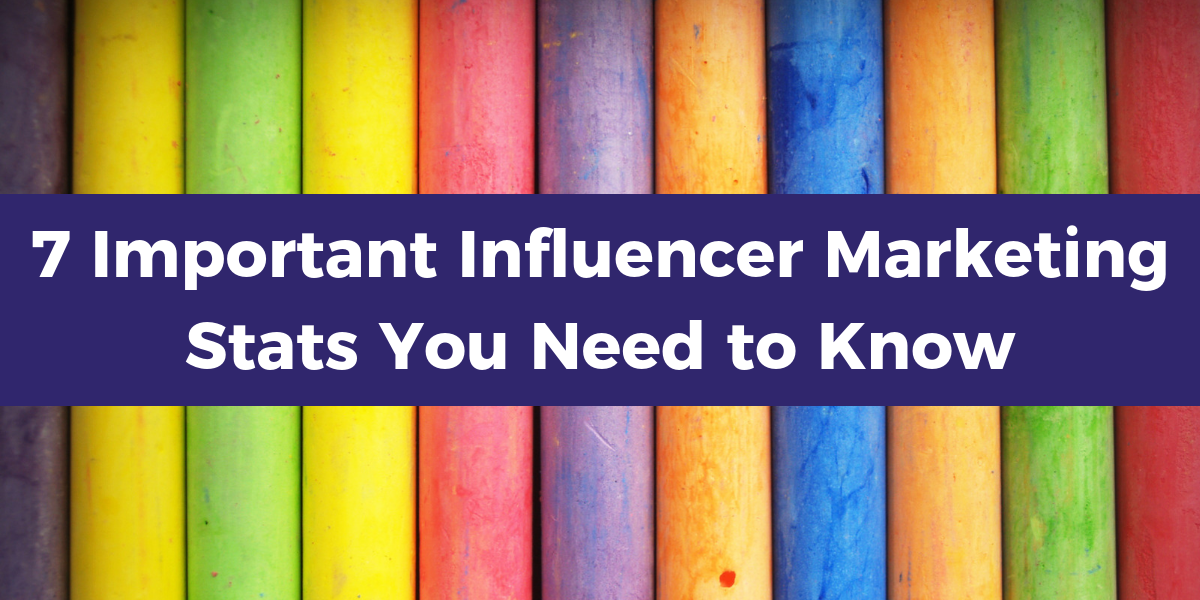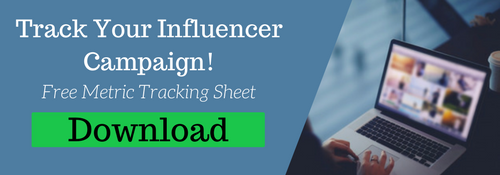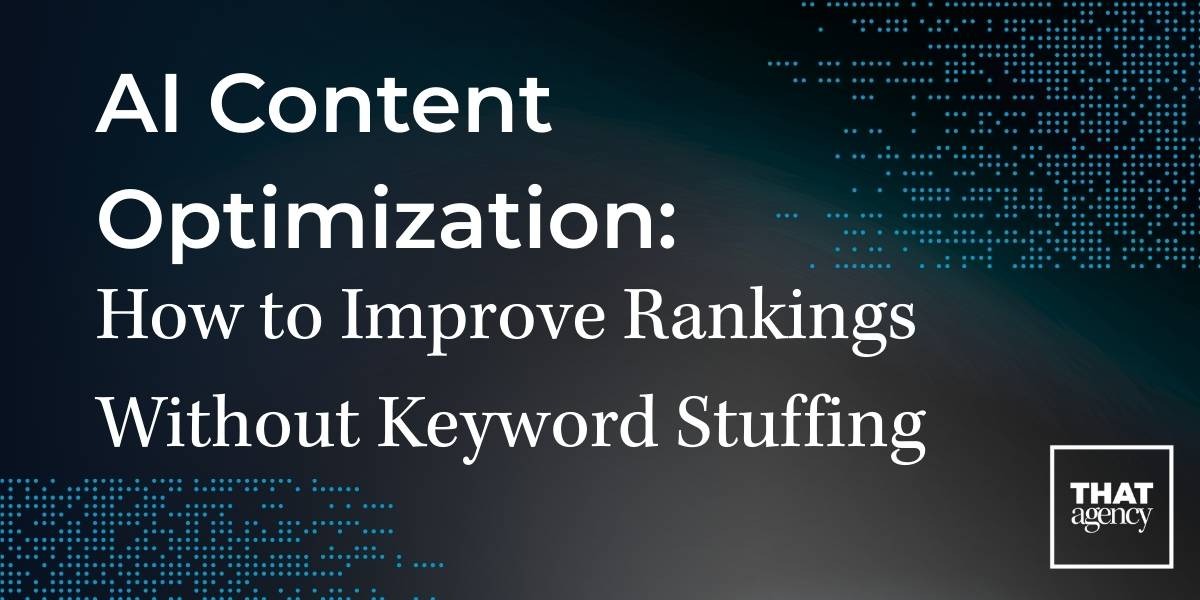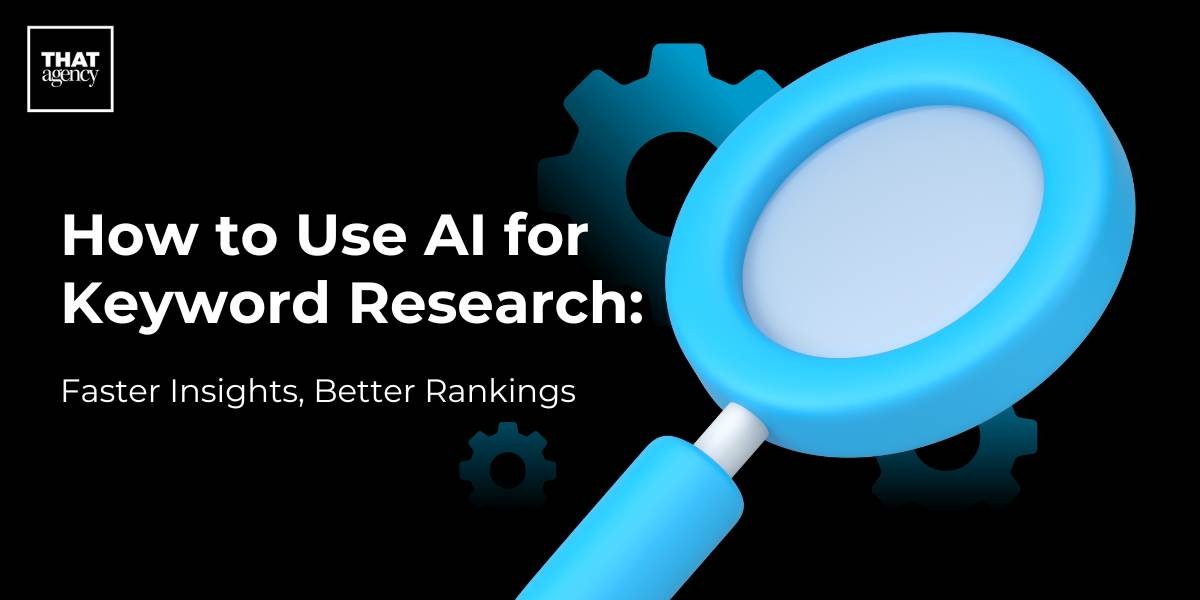Influencer marketing is a form of digital marketing in which brands focus on leveraging the influence of people who have strong personal brands rather than taking a brand message straight to consumers. Since people trust other people more than they trust brands, influencer marketing has become a very popular tactic when it comes to generating brand awareness, engagement, and stimulating sales. While influencer marketing does have its weaknesses, you can’t deny the impact that the right partnership can make. Thinking about leveraging influencer marketing for your brand? Here are 7 important influencer marketing stats you need to know.

1. Influencer Marketing soon will be a $10 Billion Industry
A few short years ago, people who had built a following online were happy to exchange content for free products. Who doesn’t like free stuff?! These days, influencers are asking for compensation in exchange for visibility with their audience. It's estimated that the influencer marketing industry will bubble up to $10 billion by next year. The competition for influencers will increase and costs will go up. Structure your budgets accordingly!
2. 94% of Marketers Think Transparency and Authenticity Are Critical to Influencer Marketing Success
It is interesting that an overwhelming majority of marketers think that transparency and authenticity are important to a business relationship meant to generate sales. Of course, we should all make sure that the influencer marketing partnerships we activate are mutually beneficial and brand relevant; however, the jaded marketer in me smirks at this because these influencers are very transactional. They don’t have much brand loyalty and are typically interacting with multiple brands at a time, so it's theoretically impossible for them to be authentically evangelical about a brand if they are getting paid to promote it.
Marketers tend to romanticize influencer marketing by thinking that simply getting important people to like and promote their product will generate sales. In reality, we should view influencer marketing much like any other channel and demand the same analytics and responsibility to ROI.
If you want a key example of why it's unrealistic to expect authenticity from influencer marketing, consider the infamous Fyre Festival. Influencers were used to sell out an incredibly expensive festival only for it all to turn out to be a fraud. The moral of the Fyre Festival story is to keep reasonable expectations when it comes to transparency and authenticity with influencer marketing.
3. 39% of Active Instagram Accounts with More than 15,00 Followers Are Considered “Influencers”
According to recent studies, there are 558,000+ influencers on Instagram who have more than 15,000 followers. Also mentioned in similar studies is that 81% of all influencers are considered “mico-influencers” who have smaller, focused audiences of anywhere between 15,000 to 100,000 followers. Celebrity influencers with millions of followers only make up 1% of all influencers and definitely command a hefty price tag. So what does this all mean?
While all brands would love the luxury of partnering with a celebrity influencer, people with smaller audiences are more approachable and affordable, thus making your budget go further. The key here is doing your due diligence to ensure that the influencer you’d like to partner with fits your target buyer persona.
4. 42% of Marketers Are Concerned About Fake Followers and Bots
I’m surprised that this stat isn’t much larger, as this should be one of the biggest concerns for any marketer looking to invest in influencer marketing. In thinking about how influencer marketing will become a $10 billion industry by 2020, we have to acknowledge that there is a race to build followers so that influencers can ask for higher compensation.
Social media best practices tell us that building a following can be a slow, arduous process. However, for influencers, speed is everything. Therefore, many choose to inflate and pad their follower counts by purchasing followers. You can easily buy 10,000 followers for $50, so buying a following takes no time. Experienced marketers know that looking at an influencer’s follower count alone is not a good idea. You must also examine the engagement they get on their content.
And yet, this activity can also be bought. Not only can influencers buy a following, they can also purchase engagement activity through bot accounts to mimic authentic influence. This is a fairly common practice and ALL marketers should be concerned about these tactics when sourcing influencers.

5. 22% of 18 to 34-year-olds made a large purchase after seeing an online influencer endorsing the item
This may seem like an exciting stat, but what it really tells us is that while 22% of 18 to 34-year olds made a large purchase after seeing an online influencer endorsing the item, 78% (theoretically) did not! Influencer marketing can absolutely help sell products; however, much like every other digital marketing channel, consumers interact with several different stimuli before making a purchase. Therefore, influencer marketing should be a supportive element of a digital marketing strategy, not a digital marketing strategy by itself.
6. 84% of marketers think that the measurement of ROI will be critical to the future success of influencer marketing
The biggest flaw with influencer marketing is being able to track results. As I said before, most influencers are very transactional and are looking to turn deals very quickly. Rarely are they held to a standard of ROI or compensated based on the sales they generate.
There are deals out there structured on the influencer being paid based on how much revenue they bring in; however, since time is money, the influencer would lose dollars trying to prove value rather than simply turning and burning more partnerships.
Currently, engagement on content is what a lot of influencers pride themselves on; however, as I mentioned before, this can be faked. Think critically about what your brand hopes to get out of the influencer partnership. If it is brand engagement and impressions, that’s great! Be sure to ask for a top-level summary of what your dollars generate. If you are looking for sales, even better! Provide a unique URL or a coupon code that you can track to attribute sales. The responsibility is on you to demand better measurement from the influencers with which you partner!

7. 90% of Marketers Say Engagement is the Most Common Metric to Measure Influencer Marketing
Engagement is great, but revenue is better. Dollar for dollar, influencers should generate more engagement than a sponsored piece of content, but sometimes it doesn’t pan out that way. Keep in mind that influencers are in the game to build an audience, and then get paid to promote products to that audience. People are hip to the game and recognize a paid partnership. Unless the content is compelling, I would offer that a sponsored piece of content is likely to get far less engagement than an on-brand and non-promotional post by an influencer. Keep this in mind when using engagement as your main KPI for success.
Bonus: 4 Ways in Which Influencer Marketing Can Help Your Business
1. Reach More People
By collaborating with popular influencers you can reach their huge number of followers. A simple brand mention from a popular influencer can help you reach tens of thousands of people.
You can also ask them to promote your sale or ongoing promotions and make more people aware of it. This can indirectly drive your sales as well.
2. Connect with the Right Audience
Influencers have a loyal and targeted audience base of people who are interested in a particular topic or niche. By choosing the right influencers in your niche you can tap into this targeted audience base.
The idea here is to work with smaller influencers who are most relevant to your brand and have a follower base that matches your brand’s target audience. These people are more likely to follow and check out your brand as they are already interested in your niche.

3. Drive More Sales
You can provide influencers with unique discount codes that they can share with their followers and encourage them to purchase your products/services. A recommendation from their trusted influencer and the added incentive of a discount is often enough to convince people to buy.
This way, influencers can directly increase your sales and get you more customers.
4. Improve Your Brand’s Credibility and Image
One popular way of collaborating with influencers is to ask them to review your products. You can either send them free products to write an honest review or pay them to write a positive review.
In either case, a good review from an influencer can not only put your product on the map but also make people trust it more.
Conclusion
While influencer marketing is undoubtedly good for your business, it does come with a few challenges. You should look at both the pros and cons of influencer marketing before you invest in it. This infographic can help:
In closing, the tone of this article might seem skeptical about influencer marketing. Overall, influencer marketing is a great way to build awareness for a brand and spark engagement with consumers. However, there are a lot of pitfalls that can cause marketers to waste a lot of money with the wrong partnerships, fake followers, faux engagements, and lack of analytics. These items will only be overcome as influencer marketing grows. Yet, despite a number of positive influencer marketing stats, today we must all be cautiously optimistic about influencer marketing when adding it to our overarching digital marketing strategies.
>> Get help making the most of your influencer marketing. Contact THAT Agency now.





